When to Introduce New Toys and Games to Your Ferret
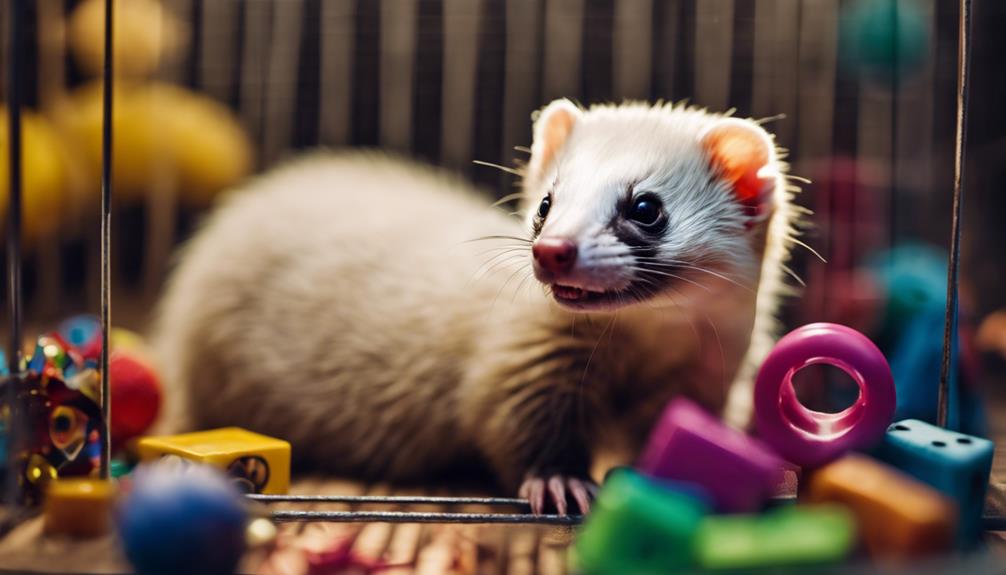
Introducing new toys and games to your ferret can be a fun and enriching experience for both you and your pet. However, it’s important to consider a few key factors before doing so. Firstly, take into account your ferret’s age and personality. Younger ferrets may have more energy and curiosity, making them more receptive to new toys, while older ferrets may be set in their ways and prefer familiar items.
Additionally, consider your ferret’s preferences and interests. Some ferrets may enjoy toys that stimulate their natural hunting instincts, while others may prefer interactive toys that allow them to play with their human companions.
Finally, introduce new toys gradually to prevent overwhelming your ferret and to give them time to adjust and explore each new item at their own pace. By considering these factors, you can ensure that introducing new toys and games to your ferret is a positive and enjoyable experience for both of you.
Consider Your Ferret’s Age
Is your ferret’s age important when picking out toys and games? Absolutely! Let’s dive into why age matters when it comes to keeping your furry friend entertained:
- Young ferrets need toys that spark curiosity and encourage exploration. Interactive games can boost their brainpower and keep them moving.
- As ferrets grow up, they might crave more complex toys like puzzle feeders, tunnels, and toys that mimic hunting. These items engage their minds and cater to their natural instincts.
- Elderly ferrets have different needs. They benefit from gentle, low-impact toys that keep them active without straining their aging bodies. It’s crucial to adjust their playtime to suit any physical limitations while still providing mental stimulation.
Assess Your Ferret’s Personality

When introducing new toys and games to your ferret, it’s crucial to assess your furry friend’s personality. Understanding your ferret’s behavior and considering their play preferences can help you choose toys and activities that will keep them engaged and happy.
Understand Ferret Behavior
Unlocking Your Ferret’s World
Have you ever wondered what your playful ferret is thinking? Understanding your ferret’s behavior is like deciphering a secret code to their world. Let’s dive into their furry minds!
- Social Butterfly or Lone Ranger: Does your ferret love to mingle with other pets and humans, or does it prefer some alone time? Understanding their social needs is key to keeping them happy.
- Playtime Galore: Watch your ferret in action during playtime. What games make their tail wag with excitement? Knowing their favorite activities and energy levels helps you bond better.
- Decoding Ferret Speak: Ferrets have their own language of body movements, sounds, and habits. Pay attention to these cues to understand their emotions and preferences. Are they happy, scared, or curious?
- Adapting to Change: How does your ferret react to new environments or changes at home? Observing their responses helps you create a cozy and safe space tailored just for them.
Consider Play Preferences
Do you know what makes your ferret tick when it comes to playtime? Understanding your furry friend’s play preferences can help you create a fun and engaging playtime routine tailored just for them. Let’s dive into the world of ferret play styles and toy preferences!
What kind of toys does your ferret like? Some may enjoy interactive toys that challenge their problem-solving skills, while others prefer toys they can chase and pounce on.
Watch your ferret’s behavior during playtime. Are they losing interest quickly or getting frustrated? These cues can tell you if the toy matches their play style.
Evaluate the Current Environment
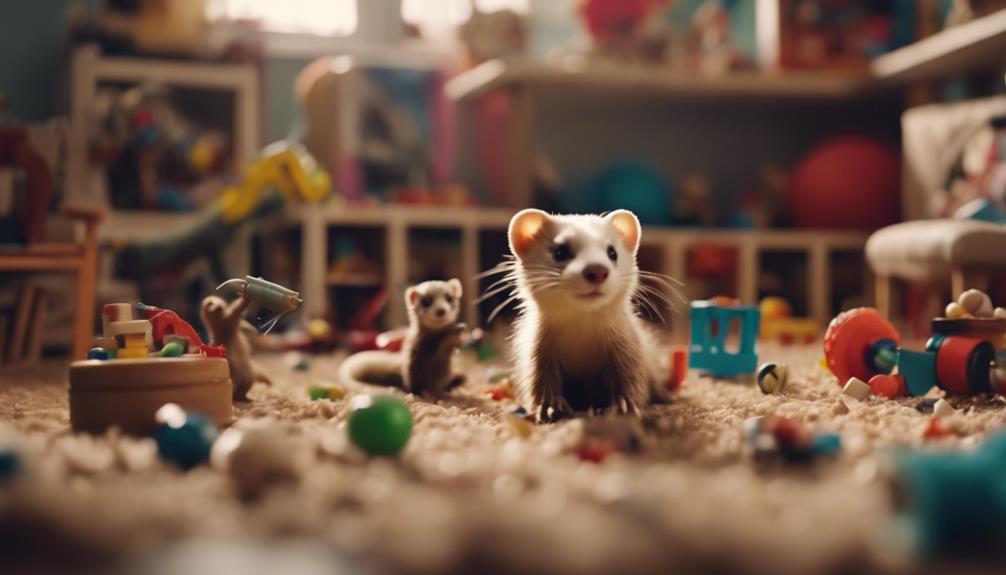
Is your ferret’s living space safe and cozy for playtime? Let’s check it out before adding new toys and games! Here’s what you need to consider:
- Ferret-proofing: Look for any tiny spots where your ferret might get stuck or things they could swallow.
- Toxic substances: Get rid of any chemicals, plants, or foods that could make your ferret sick.
- Temperature control: Make sure the area is just right, not too hot or too chilly for your ferret.
- Escape prevention: Block off any spots where your ferret could escape or wander off.
Introduce Toys Gradually
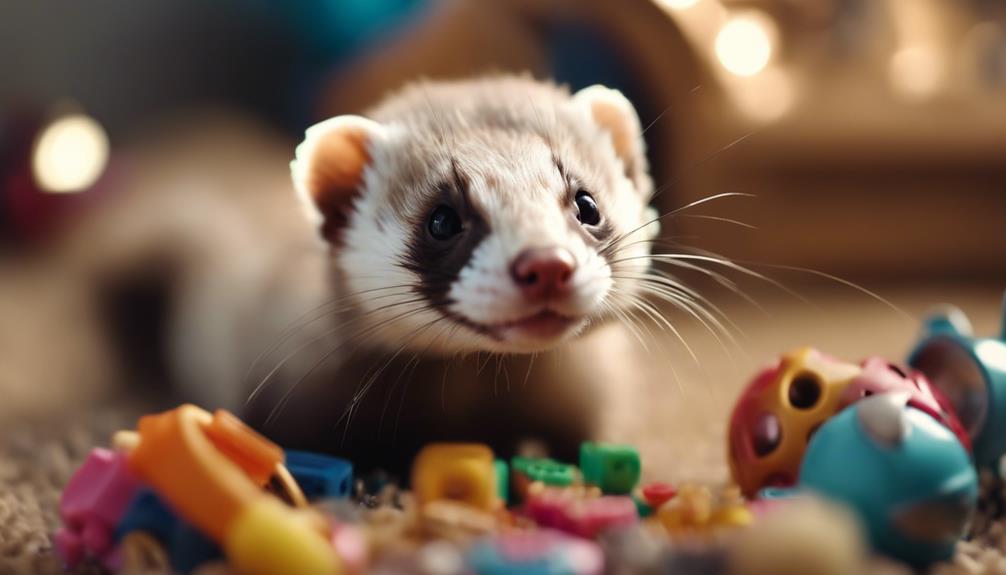
When bringing new toys into your ferret’s environment, it’s important to start with basic options to gauge their interest.
By observing how your ferret interacts with each toy, you can determine which ones they prefer.
Remember to rotate toys regularly to keep their environment stimulating and engaging.
Start With Basic Toys
Are you ready to make playtime with your ferret more fun and engaging? Let’s start by introducing some basic toys that will keep your furry friend entertained and happy! Here’s how you can do it:
- Mix it up with Variety: Give your ferret a mix of toys that offer different ways to play and keep their minds active.
- Switch it Around: Keep things exciting by swapping out toys regularly to prevent boredom and maintain interest.
- Get Interactive: Choose toys that allow you to play with your ferret, building a stronger bond and making playtime more enjoyable for both of you.
- Safety Comes First: Make sure to pick toys that are safe for ferrets, designed specifically for their play needs to avoid any accidents during playtime.
Observe Ferret’s Interest
Are you curious about how to tell if your ferret likes their new toys? Let’s find out together! When introducing new toys to your furry friend, it’s important to take it slow and observe their reactions carefully. By paying attention to how they interact during playtime and their behaviors, you can figure out if the toy sparks their interest. Some ferrets may jump right in with excitement, while others might need a little time to warm up to something new.
Here’s a handy guide to help you understand your ferret’s reactions to new toys:
- Energetic Playtime Engagement: Watch for high energy levels and active play.
- Curious Behavioral Cues: Look for interest and exploration in their actions.
- Active Playfulness: See if they’re persistent in engaging with the toy.
- Investigative Behaviors: Notice if they’re actively investigating and playing with the new toy.
Rotate Toys Regularly
Do you want to keep your ferret happy and active? Well, one way to do that’s by switching up their toys regularly! Why is this important? Let’s find out:
- Say Goodbye to Boredom: Changing toys keeps your ferret entertained and stops them from getting bored.
- Let’s Explore: Introducing new toys slowly encourages your ferret to check out and play with their surroundings.
- Toy Time Extension: By swapping toys, you can make them last longer and prevent them from getting worn out too fast.
- Mix It Up: Offering different toys ensures your ferret gets to enjoy various types of play, which is great for their overall happiness.
Observe Your Ferret’s Response
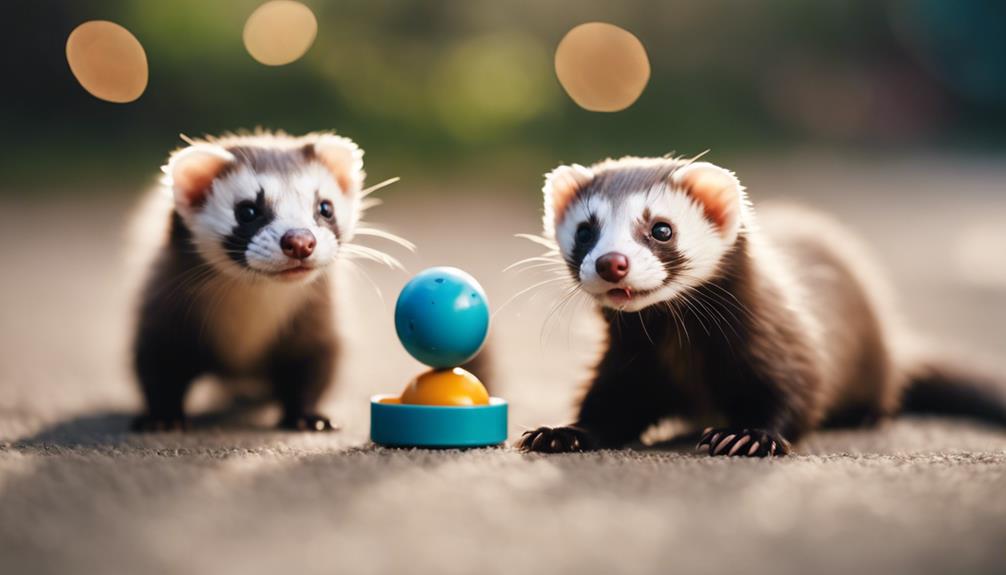
Watch Your Ferret’s Reactions to New Toys and Games!
Hey there, curious ferret owners! Have you ever wondered how to tell if your furball is loving the new toys you got them? Well, it’s all in the way they react! Let’s dive into how you can understand your ferret’s interest and engagement levels when you introduce something new to their playtime.
Here are some signs to look out for when presenting new toys and games to your ferret:
- Excited Ferret Alert! Do you see your ferret hopping and jumping around with glee? That’s a good sign they’re intrigued!
- Sniff, Sniff! Watch as your ferret sniffs and investigates the new toy with curiosity. It’s like their way of saying, ‘What’s this?’
- Paws at Play! If your ferret starts pawing and rolling around with the toy, they’re really getting into it!
- Hide and Seek Expert! Does your ferret drag the toy into hiding spots? They’re adding a fun twist to their playtime!
- Chirp, Dook, Play! Listen for chirping or dooking sounds – it’s their way of showing excitement and engagement.
- Mock Hunting Mode! When your ferret engages in mock hunting behavior, like stalking and pouncing on the toy, they’re having a blast!
Rotate Toys Regularly
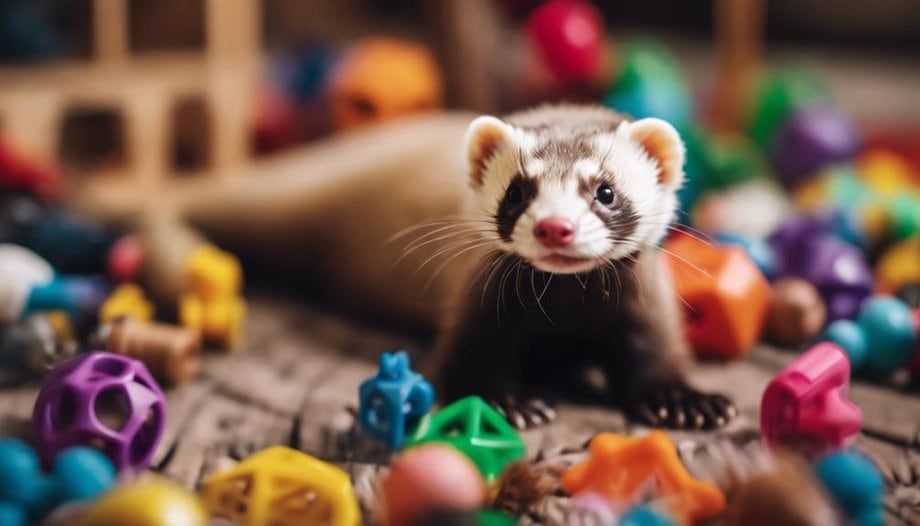
Keep Your Ferret Happy and Active with Fun Toy Rotation!
Hey there, ferret lovers! Did you know that keeping your furry friend entertained with new toys isn’t just fun but also super important for their happiness and well-being? Let’s dive into why rotating your ferret’s playthings is a game-changer!
No More Boredom: Switching up toys prevents your ferret from getting bored, keeping them on their toes and away from mischief!
Get Moving: Rotating toys encourages your ferret to stay active and healthy, ensuring they get the exercise they need to stay fit and agile.
Smarty Pants: New toys challenge your ferret’s brain, helping them develop problem-solving skills and keeping their minds sharp.
Bonding Time: Playing with different toys strengthens the bond between you and your ferret, creating special moments of joy and connection.
Monitor Wear and Tear on Toys

Are your ferret’s toys safe and fun for playtime? Let’s dive into why it’s important to keep an eye on their condition!
Why Check Toys Regularly:
- Ensures safety for your ferret during playtime.
- Prevents potential hazards from wear and tear.
- Keeps toys enjoyable and engaging.
What to Look For:
- Loose parts that could be a choking hazard.
- Sharp edges that may harm your ferret.
- Small pieces that could be ingested.
How to Keep Your Ferret Entertained:
- Rotate toys to prevent boredom.
- Introduce new toys to keep playtime exciting.
- Address any damaged toys promptly.
Frequently Asked Questions
Can Ferrets of All Ages Benefit From the Introduction of New Toys and Games?
Ferrets of all ages can benefit from new toys and games. Age appropriateness should be considered, ensuring safety for seniors. Playtime frequency is crucial, providing interactive options for mental stimulation and physical exercise.
How Can I Tell if My Ferret’s Personality Is Suited for Certain Types of Toys or Games?
Like a key fitting into a lock, observing a ferret’s toy preferences and behavioral cues can help determine their play styles and enrichment needs. By understanding these aspects, one can tailor toys and games accordingly.
Are There Any Specific Environmental Factors I Should Consider Before Introducing New Toys to My Ferret?
Before introducing new toys to a ferret, consider the play area’s safety and age appropriateness of the toy. Also, assess the social interaction benefits it may offer. Understanding these environmental factors can enhance the ferret’s playtime experience.
What Are Some Signs That Indicate My Ferret Is Not Responding Well to a New Toy or Game?
If a ferret shows behavioral changes like lack of interest, or health concerns such as aggressive behavior towards new toys or games, it may be a sign that the introduction isn’t going as planned and adjustments are needed.
How Often Should I Rotate My Ferret’s Toys and Games to Keep Them Engaged and Stimulated?
To keep a ferret engaged, adjust their playtime routine by rotating toys regularly. Observe their toy preferences and introduce new options accordingly. Incorporate bonding activities and enrichment options to strengthen the human-ferret relationship while keeping them mentally stimulated.











